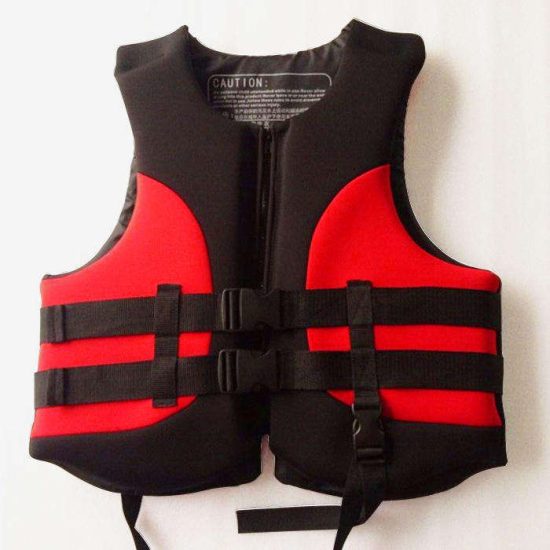If you’re referring to the basic components and features of a typical life jacket, here’s an overview:
- Buoyant Material:
- The core of a life jacket is the buoyant material that keeps the wearer afloat. This material is often made of lightweight foam.
- Outer Shell:
- The outer shell covers and protects the buoyant material. It is usually made of durable, water-resistant, and sometimes reflective material.
- Straps and Buckles:
- Life jackets typically have adjustable straps and buckles to secure the device around the wearer’s body. These should be snug but not overly tight to allow for comfortable movement.
- Flotation Collar or Head Support:
- Many life jackets have a collar or head support to help keep the wearer’s head above water, especially in rough conditions.
- Closure Mechanism:
- The closure mechanism, often a zipper or a combination of zippers and buckles, ensures that the life jacket stays securely fastened during use.
- Whistle or Signal Device:
- Some life jackets come with a built-in whistle or another signaling device to attract attention in case of an emergency.
- Reflective Elements:
- To enhance visibility, especially in low light conditions, many life jackets have reflective strips or patches.
- Drainage Holes:
- Drainage holes allow water to drain away from the life jacket, preventing it from becoming waterlogged.
- Type Label:
- Life jackets are classified into different types (Type I, II, III, IV, V) based on their design and use. The type label is typically found on the inside of the jacket and provides information on the recommended use.
- Care and Use Instructions:
- Manufacturers include guidelines for the proper care, use, and storage of the life jacket. It’s crucial to follow these instructions to ensure the effectiveness of the device.
- Size Label:
- The size label indicates the appropriate size for the wearer. It’s essential to choose a life jacket that fits properly to ensure proper buoyancy and safety.
Understanding these basic components and features will help users select, wear, and maintain life jackets effectively for various water activities. Always follow the guidelines provided by the manufacturer and relevant safety authorities.


